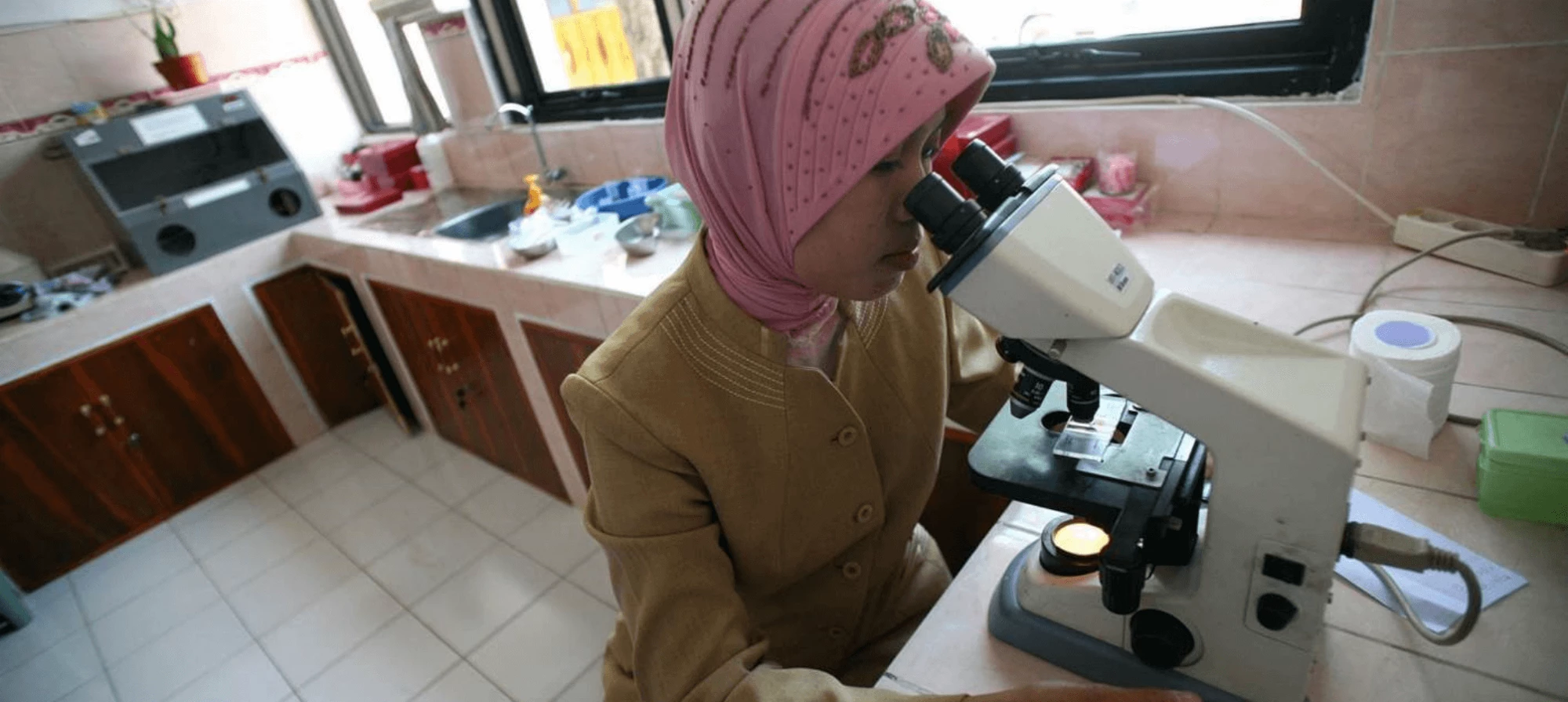 woman looks through a microscope
woman looks through a microscope
By now, it has become clear that the SARS-Cov-2 pandemic is not a one-off, unfortunate event but the beginning of a new era in global health and security. We are also coming to grips with the new post COVID-19 reality, likely to be somber unless we, the global community, get our act together to prepare and respond to its longer-term effects.
With 150 million cases and 3 million deaths, still mounting, the urgency is evident. While we now have several vaccines and more in development, we are far from reaching herd immunity globally—even in the Western world, which has received the largest share of vaccines—because of logistics, vaccine hesitancy, and above all politics.
Looking for the silver bullet
We are paying the price for years of complacency that led us to neglect getting prepared for the “next” pandemic, despite recent warnings. Vaccines now seem to offer the only response, short of more accurate diagnostics and efficacious anti-viral therapeutics for those unfortunate enough to get infected, many of whom are overwhelming hospitals and ICUs. Therein comes Antimicrobial Resistance (AMR).
A growing literature shows rampant use of antibiotics in the treatment of COVID-19, a viral infection: an estimated 75 percent of COVID-19 patients were given antibiotics against co-infections and secondary infections, even though their occurrence is estimated at less than 10 and 15 percent, respectively. Older patients, those with co-morbidities, patients in ICUs or hospitalized in the Middle East and Asia have invariably been treated with antibiotics.
Many patients have also received re-purposed antiretrovirals used to treat other viral infections such as Influenza, Ebola or HIV, despite evidence of rapidly increasing resistance. Not to mention the controversial use of hydroxychloroquine, an antimalarial drug, and more recently ivermectin, a low-cost antiparasitic drug used to treat river blindness (onchocerciasis) and lymphatic filariasis in Low- and Middle-Income countries (LMIC), but also in veterinary medicine.
About a month ago, the US National Institute of Health coined a new acronym, PASC, or Post-Acute Sequalae of COVID-19 in full, to replace what was hitherto called long COVID, characterized by unexplained lingering clinical manifestations such as loss of smell, brain fog, mental and sleep disorders, and impaired lung capacity as a longer-term consequence of SARS-CoV-2 infection. We argue that AMR qualifies as sequala, defined by Webster as an after-effect of a disease or a disorder which may or may not be clinical.
Unintended Side Effects
When dealing with an all-new pandemic of zoonotic origin that hits humankind with a sense of defenselessness, the temptation to repurpose the antimicrobials in our arsenal, as well as resort to innovation, is understandable.
Several global health partners set up the Access to COVID-19 Tools Accelerator (ACT-A) together, to accelerate the development, mass production and deployment of new tools. Yet, in the absence of proven, immediate solutions, we may be putting unjustified evolutionary pressure on bacteria, viruses and parasites through inappropriate use of antimicrobials.
As noted in our earlier report on Drug Resistant Infections, in our panic, by pilfering our existing antimicrobial arsenal and focusing only on the emergency, we may jeopardize longer-term efficacy while also postponing crucial investment in Research & Development (R&D) for new antimicrobials, which should be high priority.
A recent World Health Organization report on global R&D concludes that the current clinical pipeline of anti-bacterials is “insufficient” to tackle the AMR challenge. While new tools in the pre-clinical pipeline are diverse and innovative, they still require years of development before they can be used and may not target the most dangerous drug-resistant bacteria.
This sobering report coincides with another publication telling us that, with antibiotics now widely available in LMICs, their inappropriate use in the treatment of child infections has become a greater concern than undertreatment. To rein in drug resistance, we must improve global antibiotic stewardship to prevent what one member of the WHO AMR Taskforce described as “ a post-antibiotic era, where a simple wound or a dental infection can be fatal”
What's next?
Epidemiologist Dr. Larry Brilliant said in 2017 that, “Outbreaks are inevitable but pandemics are optional,” akin to what seismologist Lucy Jones, quoted in Dr Richard Hortons’s book “The COVID-19 Catastrophe” said more recently: “Natural hazards are inevitable; the disaster is not.”
All point in the right direction: we must invest in preparedness to avoid outbreaks evolving into epidemics, let alone into pandemics, and causing catastrophe on a global scale. This involves not just identifying effective tools for the disease at issue, but also considering unintended consequences, or sequalae, such as Antimicrobial Resistance.
“We need to prepare for epidemics the way the military prepares for war,” Bill Gates warned in 2017. He also pointed out a few months ago that investing billions in preparedness will save trillions in economic terms while preventing millions of avoidable deaths.
As noted in an earlier blog, preparations need to be both tactical—hardware, logistics, command and control—and strategic, that is foreseeing long-term consequences. For the betterment of One Health (human, animal and shared ecology), this means safeguarding the efficacy of existing antimicrobials and investing in the development of new ones.


Join the Conversation